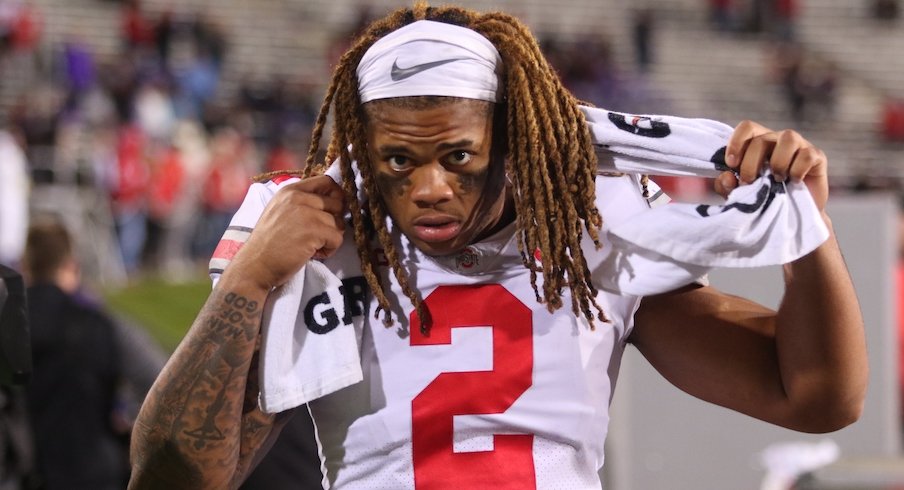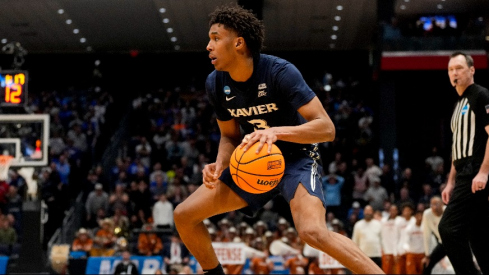Unless you’ve been off the grid for the past 24 hours, you probably already know that Chase Young won’t be playing for Ohio State today.
Young will not play in Saturday’s game against Maryland due to what Ohio State described as “a possible NCAA issue from 2018 that the Department of Athletics is looking into.” In a statement of his own after the news broke on Friday morning, Young said he “made a mistake last year by accepting a loan from a family friend” that he has known since the summer before his freshman year at Ohio State, but repaid the loan in full last summer and is working with Ohio State and the NCAA to “get back on the field as soon as possible.”
— CY2 (@youngchase907) November 8, 2019
What's Next?
Tim Nevius, a former NCAA investigator who interviewed Jim Tressel during the NCAA’s 2011 investigation into Ohio State, is representing Young as his attorney. He tweeted Friday that Young “took a small loan from a close family friend last year to cover basic life expenses.”
Bruce Feldman of The Athletic reported late Friday night that “Young borrowed money from a family friend to fly his girlfriend to California to attend the Rose Bowl. Young paid that money back in April.”
The major questions that still lack definitive answers include: how much money was Young loaned, who exactly did he receive the loan from and how long will Young’s suspension last?
The Potential Violation, According to the NCAA
According to NCAA Bylaw 16.11.1.3, “a student-athlete may receive a loan from an established family friend without such arrangement constituting an extra benefit, provided: (a) The loan is not offered to the student-athlete based in any degree on his or her athletics ability or reputation; (b) The individual providing the loan is not considered a representative of the institution’s athletics interests; and (c) The relationship between the individual providing the loan and the student-athlete existed prior to the initiation of the student-athlete’s recruitment by the member institution.”
While Young’s statement indicates that he did not receive the loan because of his athletic ability or from a representative of Ohio State, his statement does indicate that he has only known the family friend since the summer before his freshman year at Ohio State – and therefore, after he was recruited to become a Buckeye.
Although a report from Pro Football Talk’s Mike Florio on Friday indicated that the family friend in question was an NFLPA-certified agent, Feldman reported that the money was not loaned by an agent or booster, citing a source close to Young.
Either way, if it’s determined that the loan Young received constitutes an extra benefit, how long he is suspended could depend on the amount of the loan.
Penalty Guidelines
According to the NCAA Division I Committee on Student-Athlete Reinstatement’s Guidelines, suggested punishments for extra benefits violations that occurred between April 14, 2017 and June 11, 2019 are as follows:
- Value between $200 to $400 = withheld from competition for 10 percent of season and repayment
- Value between $400 to $700 = withheld from competition for 20 percent of season and repayment
- Value greater than $700 = withheld from competition for 30 percent of season and repayment
All violations are considered on a case-by-case basis, and the guidelines also state that “in situations where a student-athlete clearly has responsibility for a violation and knowingly commits a violation of NCAA regulations, a significant withholding condition should be imposed,” meaning it’s possible Young could face a steeper penalty if the NCAA determines that he knowingly violated its rules.
If the NCAA sticks to the suggested guidelines, though, Young’s suspension could be as short as one game if the amount of the loan was $400 or less, to as many as four games – which would sideline him for the rest of the Buckeyes’ regular season, including games against Rutgers, Penn State and Michigan – if the value of the loan was greater than $700.
ESPN's Kirk Herbstreit reported Saturday that Ohio State expected a four-game suspension for Young, but Ohio State spokesperson Jerry Emig later said that report was “incorrect” and that Ohio State has no expectations for what Young's suspension will be.
Similar Recent Cases
While there aren’t yet enough specific details known about Young’s case to make any strong prediction regarding how long his suspension will last, there have been plenty of similar cases involving Division I football players in recent years that could serve as precedent in determining Young’s punishment.
Among the examples:
- Alabama safety Ha Ha Clinton-Dix was suspended for two games in 2013 after receiving a loan of less than $500 from Alabama assistant strength and conditioning coach Corey Harris, who was fired for providing the impermissible benefit.
- Georgia running back Todd Gurley was suspended for four games in 2014 after receiving more than $3,000 in cash from multiple individuals for autographed memorabilia.
- Georgia wide receiver A.J. Green was suspended for four games in 2010 after he received $1,000 from former North Carolina defensive back Chris Hawkins, who the NCAA described as an agent or someone who markets amateur athletes.
- Kentucky linebacker Denzil Ware was suspended for the final game of the 2017 season after accepting $1,628 in impermissible benefits from an agent. He transferred to Jacksonville State prior to the start of the 2018 season.
- Stanford receiver Devon Cajuste served a one-game suspension after he received benefits from his landlord in 2014 that included “about $400” in meals and movie tickets with his family and a loan of “about $3,000” for a bicycle.
None of the above examples resulted in those players’ schools being forced to vacate any wins or take on institutional sanctions for their players’ violations, and it’s unlikely that Ohio State would face such punishments unless it was determined that the Buckeyes knew about Young’s violation before self-reporting it to the NCAA.
According to a report by the Columbus Dispatch’s Bill Rabinowitz and Joey Kaufman, “Ohio State was tipped off about the loan the day after the Wisconsin game on Oct. 26,” which would mean the Buckeyes were not aware of the violation while playing Young in their first eight games of the year.
Now What?
Fox Sports’ Joel Klatt, who was on campus and around the Ohio State football program Friday preparing for Saturday’s broadcast of Ohio State’s game against Maryland, tweeted Friday that he would expect a suspension of either one or two games based on precedent.
“Chase and his family have been very forthright, which is the key whenever you’re dealing with NCAA issues,” Urban Meyer, who coached Young last season and is now an assistant athletic director at Ohio State, said Friday. “He’s working with Ohio State, with the NCAA to get this thing wrapped up.
“My understanding is once again, the most important thing is transparency, honesty. He realized he made a mistake. This is what I always appreciate about a guy like Chase: He made a mistake, he owned it and he’s working to get it corrected.”
With the NCAA’s announcement last week that it is moving toward allowing student-athletes to benefit from their name, image and likeness, players like Young might soon be able to receive payments without facing discipline or even having to pay them back. Under the NCAA’s current rules, though, Young will miss the opportunity to play in at least one game – and potentially more, depending on how quickly the NCAA rules and what it determines in his case – of what will likely be his final season at Ohio State before he declares for the NFL draft.


